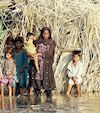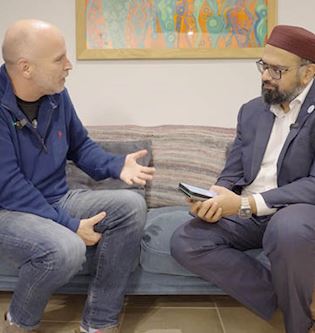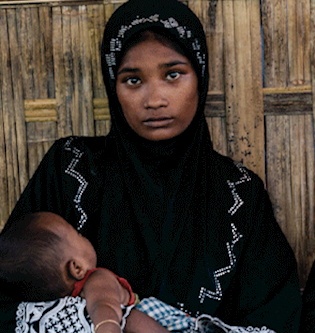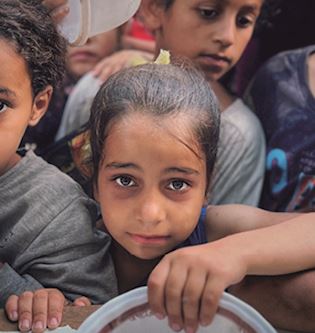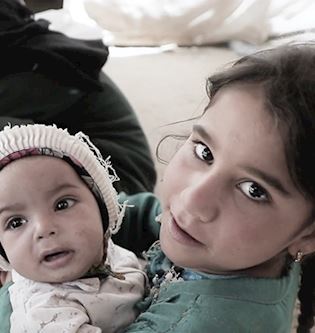The Flooding Emergencies Explained

Recently, severe flooding in Afghanistan, Pakistan, Niger and Sudan has damaged infrastructure and water sources and left thousands of people homeless. (You can learn more on our flood response page). We've put together a quick article to explain the cause of these seasonal floods and why global flooding is getting worse, as well as the impact of these severe floods on communities.
Seasonal rains
Every year, roughly between June and September, many countries undergo a rainy season, characterised by a high rainfall, strong winds and usually flooding. While the monsoon seasons are often associated with the Indian Ocean and the Asian monsoon is the most widely known, monsoon conditions occur to some extent in other regions, including parts of Africa, northern Australia, and parts of northern America.
These seasonal rains are much-needed in drought-stricken areas, with farmers relying on them to grow enough crops effectively. However, they often lead to dangerous flash flooding which kills and injures people and damages infrastructure in low-lying areas. Unfortunately, the impact of these seasonal rains has been worsening in recent years.
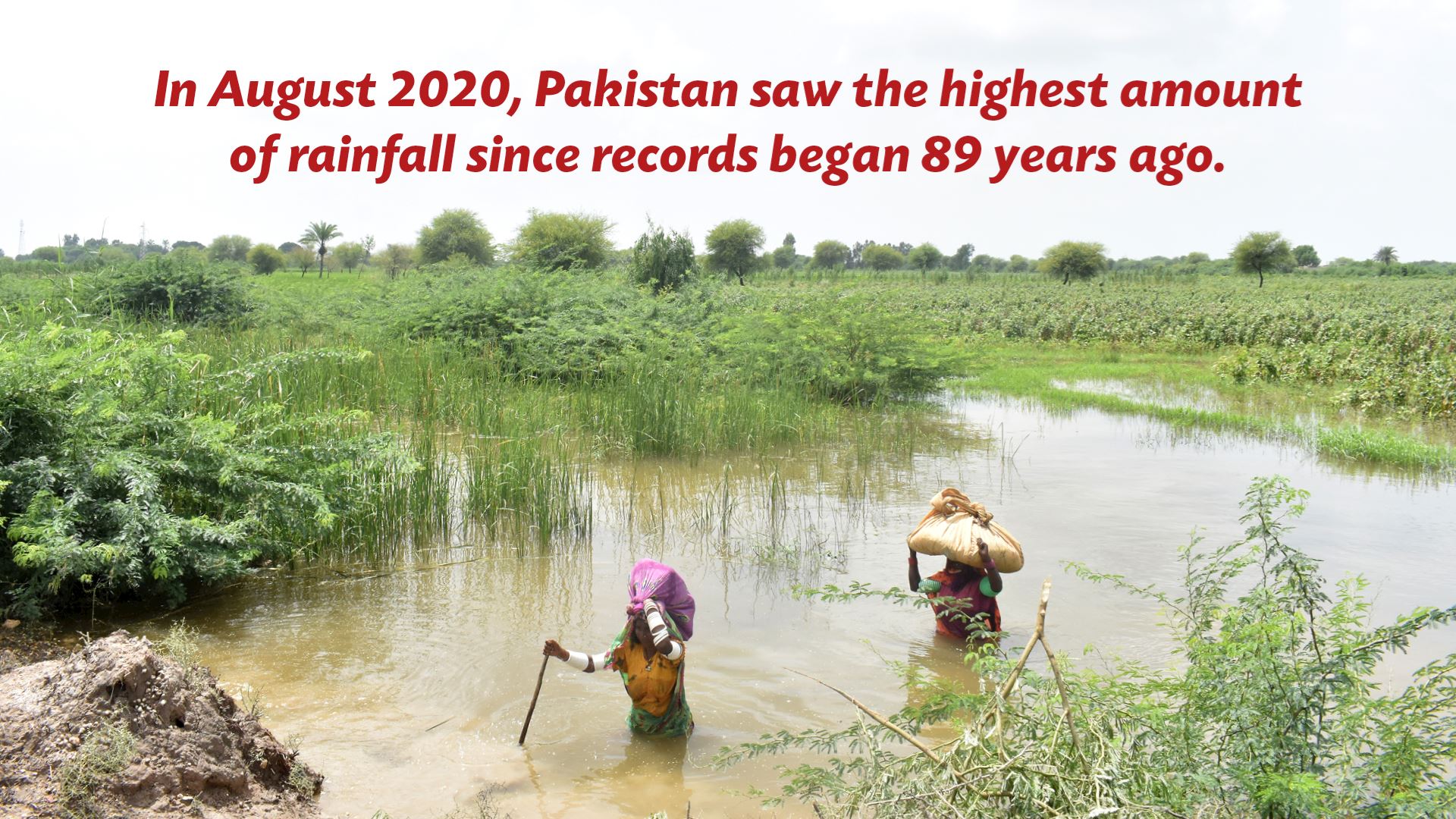
Karachi alone saw more than 230mm of rainfall in less than 12 hours, the most ever recorded, according to the Pakistan Meteorological Department. Roads have turned to rivers, houses have been destroyed, and the city of Karachi is largely underwater. Video footage showed rescue boats unable to navigate the fast-moving floodwaters to reach marooned families. More than 189 people were killed by floods in Pakistan, and thousands of homes were washed away.
Climate change
One of the reasons seasonal rains and flooding are getting worse is due to climate change. Global warming is leading to volatile weather patterns, while changes in land cover - such as removal of vegetation - increases flood risk.
Simply put, with higher temperatures in the air and oceans, there is a higher possibility of evaporation and clouds forming. This leads to more frequent and intense rain which lasts for a long time.
This can be clearly seen in the heavy seasonal rains in eastern Africa this year, which caused the Nile River to rise to nearly 17.5 metres (around 57 feet): the highest level in 100 years. In Sudan alone, this flooding affected 380,000 people, with the government declaring a state of emergency in Khartoum state.
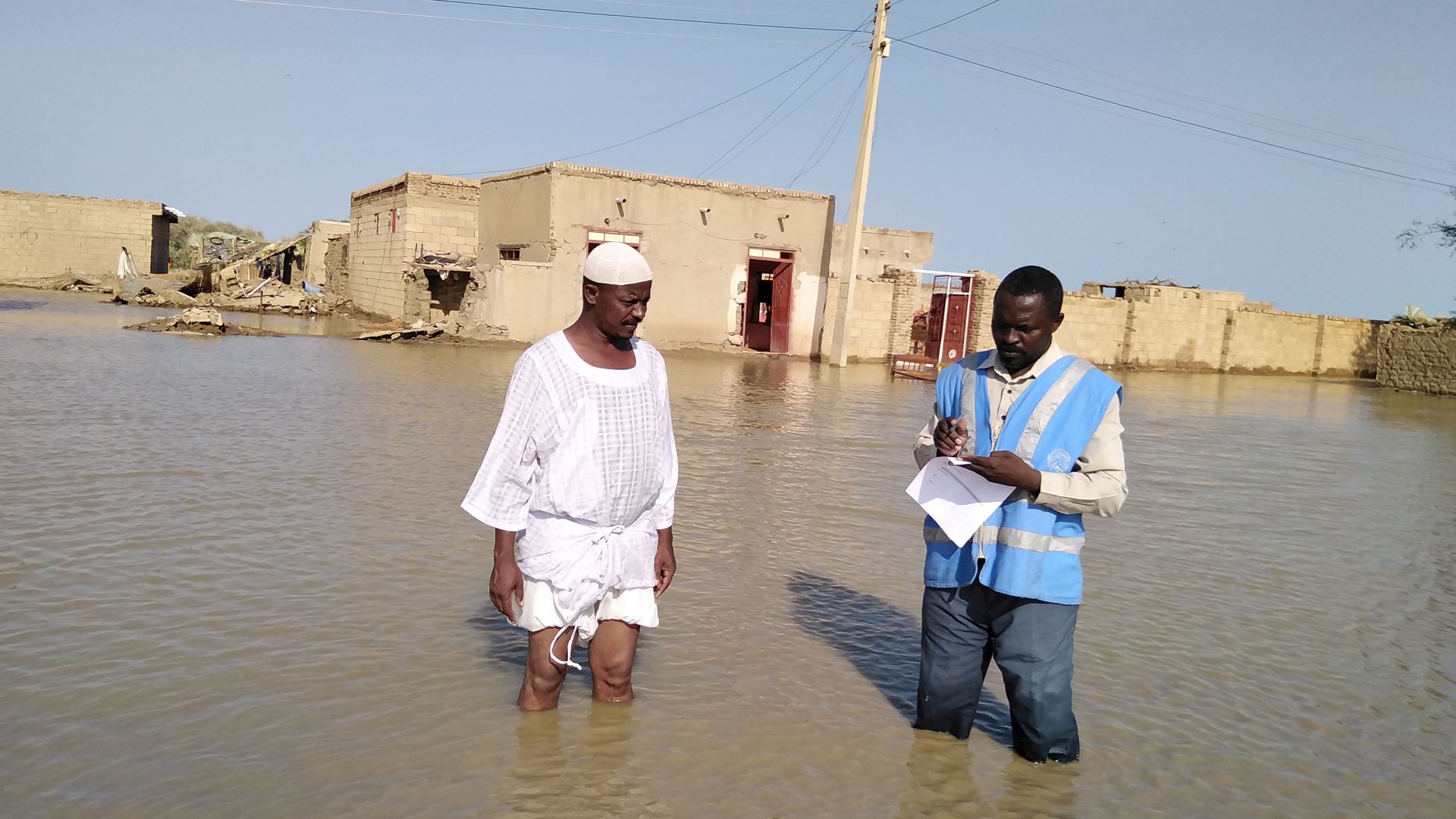
An overall increase in global temperature means that these severe floods are not anomalies. They are the beginning of the new norm, and the new records will continue to be exceeded, year after year. Extreme flooding will continue to impact the low-lying regions, and there is a danger that it will expand beyond the high-risk areas known today. Climate change will also lead to an increase in other extreme weather events, such as hurricanes and cyclones.
Infrastructure and city planning
The natural growth of cities and the expansion of slum areas mean that, as extreme floods are increasing, communities don't have the infrastructure in place to minimise risk to their homes, businesses and families.
Video footage from Pakistan, for example, showed water flowing freely through the streets, mixing with sewage and solid waste, as drainage systems were unable to handle the rainfall. Karachi's main utility company also reported its substations were being flooded, and they preemptively cut power to minimise the risk of electrocution. (At least six people died of electrocution, as exposed wires came into contact with water in the streets).
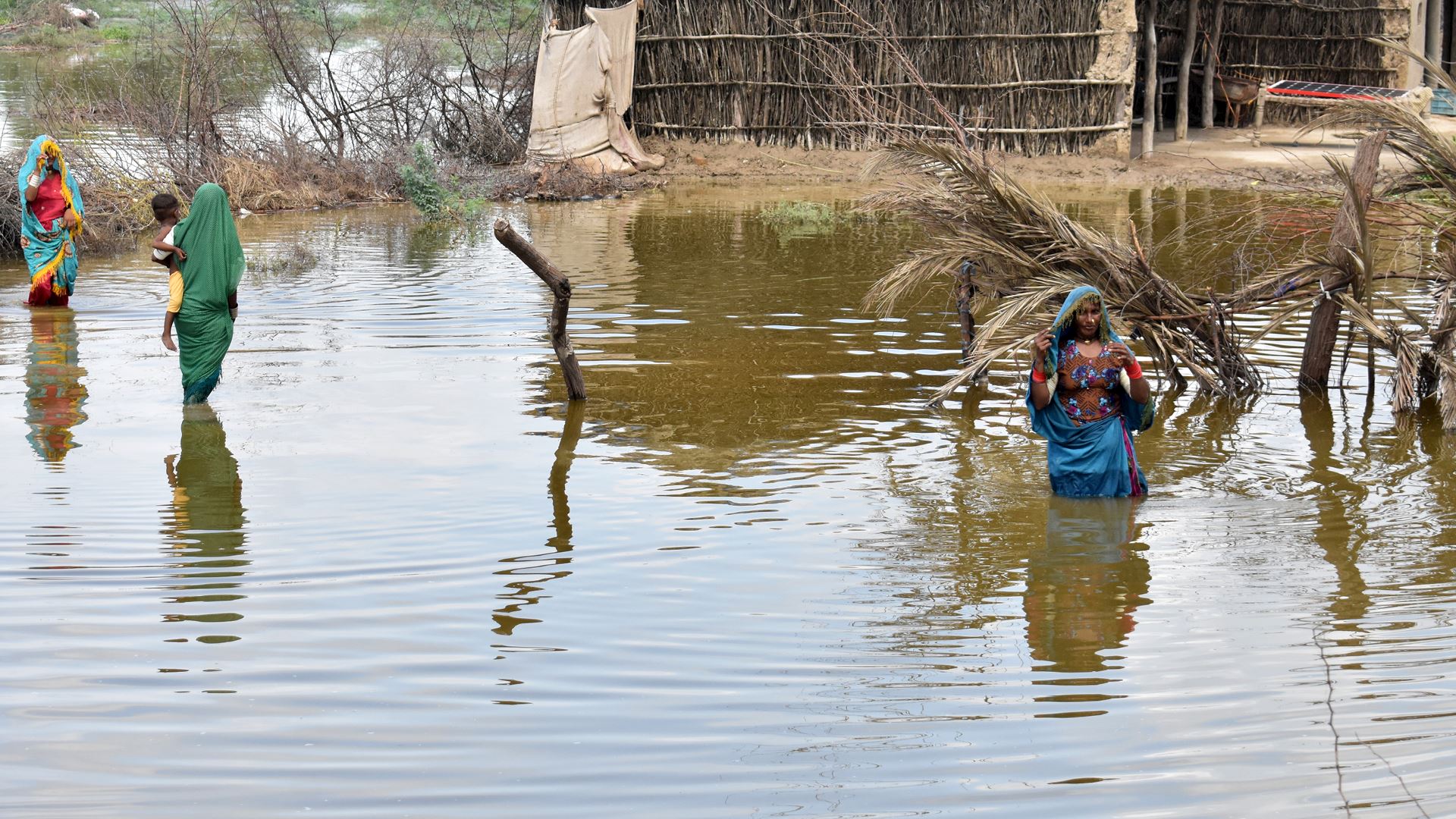
Following these deadly floods, urban planners are reiterating the need for a clear focus on climate change while building the city. Extreme weather will continue to intensify, so our solutions need to cater for these future disasters.
Other development experts have advised that we need to fundamentally re-think how we manage rivers and control floods, working with the environment rather than against it. Natural defences such as basins, forests, wetlands and marshes should be nurtured in order to fortify communities in high-risk areas, which will also help to protect the environment rather than just reacting against climate change and its disasters.
Impact of flooding on communities
In the immediate aftermath of a flood, the main concerns are taking care of the injured, searching for the missing, and providing food and water to survivors. However, communities are also extensively damaged in the long-term by the flooding.
Firstly, homes are destroyed or seriously damaged by the extreme weather. In Niamey (Niger) this year, for example, over 15,000 people have been displaced, and are taking refuge in schools and with host families. In Parwan (Afghanistan) this year, hundreds of homes belonging to poor rural farmers and informal workers were washed away. Across Sudan, some 37,000 homes were destroyed by flooding, while another 39,000 houses were damaged.
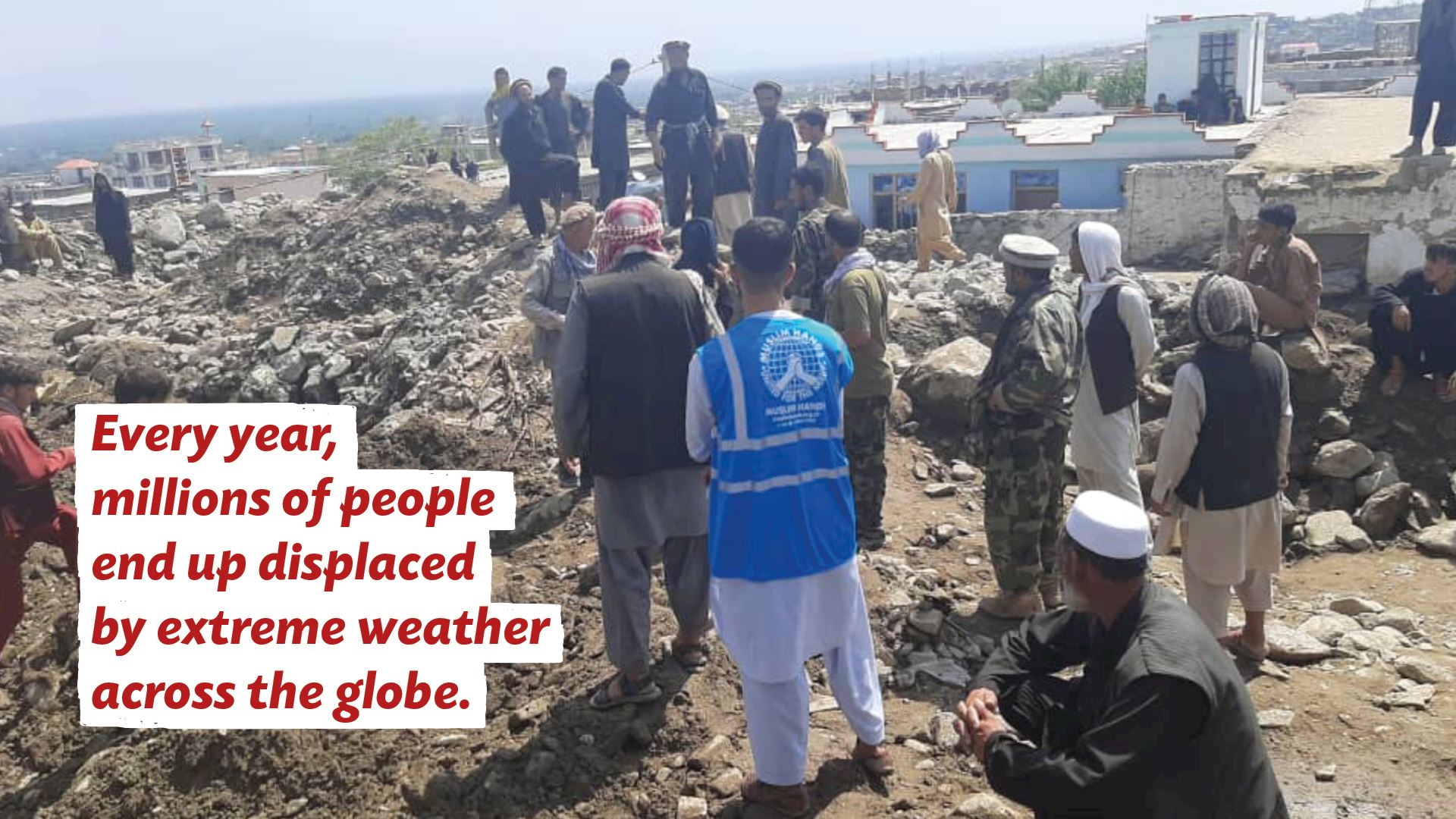
Secondly, floods also damage infrastructure and essential facilities. For example, in Sudan this year, 34 schools have been damaged as well as nearly 2,700 health facilities. Thousands of water sources in Sudan were also damaged or contaminated. In Afghanistan, a hospital in Parwan was destroyed, meaning the injured had to be transported to a hospital in Kabul.
Disruptions to children's education and lack of access to healthcare most impact the already vulnerable - this is why our teams on the ground often set up medical camps and temporary schools in disaster zones, ensuring communities don't miss out on vital services.
Thirdly, livelihoods are also damaged by extreme weather like flooding. For impoverished families who have lost their homes, belongings and any savings to the floods, the added loss of livelihood is a disaster.

In some cases, crops are destroyed or livestock are harmed: in Sudan this year, 700 cattle were killed by floods. In other cases, small businesses like shops might be unable to function due to infrastructure damage, water-logging or power cuts, leading to weeks of income loss for families who are already living hand-to-mouth. These straitened circumstances may even lead to children being pushed into the labour force, disrupting their lives further.
Fourthly, flooding can also cause psychological harm, especially to children. Following a disaster, children's physical health can be damaged by malnutrition or diarrheal illnesses, which is why it is vital to immediately respond with food and clean water. However, there is also long-term psychological harm caused by the trauma of displacement, the loss of possessions, the grief of losing loved ones, and the stress of social networks or livelihoods breaking down.
Thus, as well as emergency relief, the long-term response after a flood is also vital in rehabilitating impoverished communities and helping them get back to normal.
Flooding and coronavirus
The recent floods in Afghanistan, Niger, Pakistan and Sudan are also a concern because of the ongoing coronavirus pandemic. At a time when access to healthcare is critical, health facilities have been damaged or are overwhelmed with injured survivors. Moreover, access to clean water is even more critical in the middle of the pandemic, but thousands of water sources have been contaminated or damaged by the flooding.
As with all natural disasters, it is the most vulnerable populations that feel the impact most acutely. Where people are living in slums, informal housing or flood relief camps, they are now even more exposed to coronavirus. In Sudan, for example, an estimated 125,000 refugees and IDPs have been impacted by the flooding.
Due to these ongoing concerns, part of our flood response is providing hygiene kits (soap etc.) to reduce the risk of coronavirus infection as much as possible.

The Emergency Fund
With the increase in natural disasters such as flooding, it is more important than ever that we are able to respond quickly and effectively whenever an emergency arises.
At Muslim Hands, we have over twenty years of experience in responding to emergencies all over the globe. The Emergency Fund is what allows us to send aid immediately after disaster strikes, before we've even begun fundraising.
As well as providing immediate relief such as food parcels, clean water and blankets, we implement long-term projects to tackle the problems that follow emergencies. This can be anything from building low-cost housing to setting up schools and medical centres.
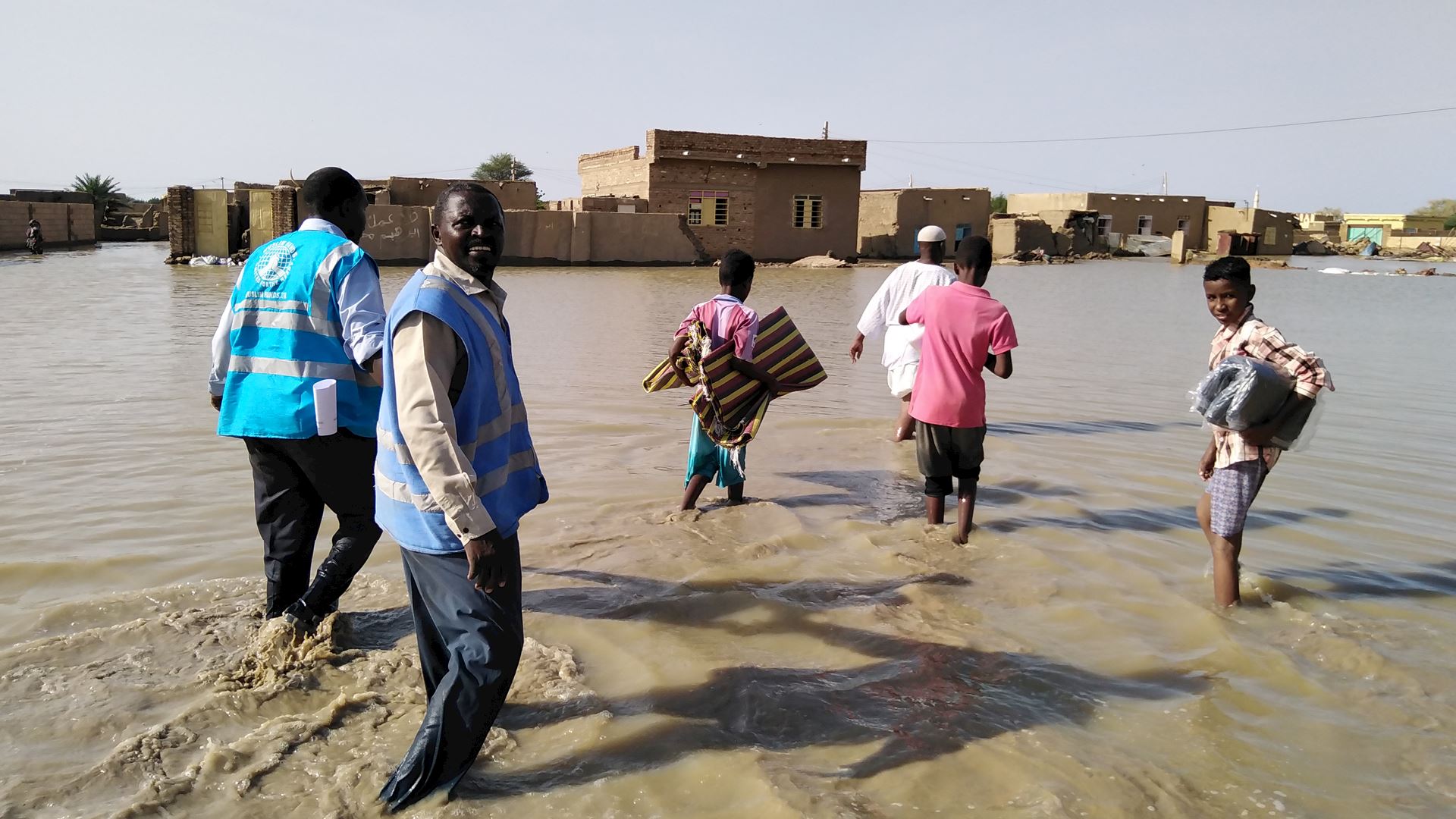
Our teams are currently on the ground responding to the floods in Afghanistan, Niger, Pakistan and Sudan.
Your donations are providing food, water, shelter kits and hygiene kits, ensuring families are protected from the elements and don’t go hungry, as well as preventing the spread of coronavirus and other illnesses. Learn more about our flood emergency response and how you can help.





